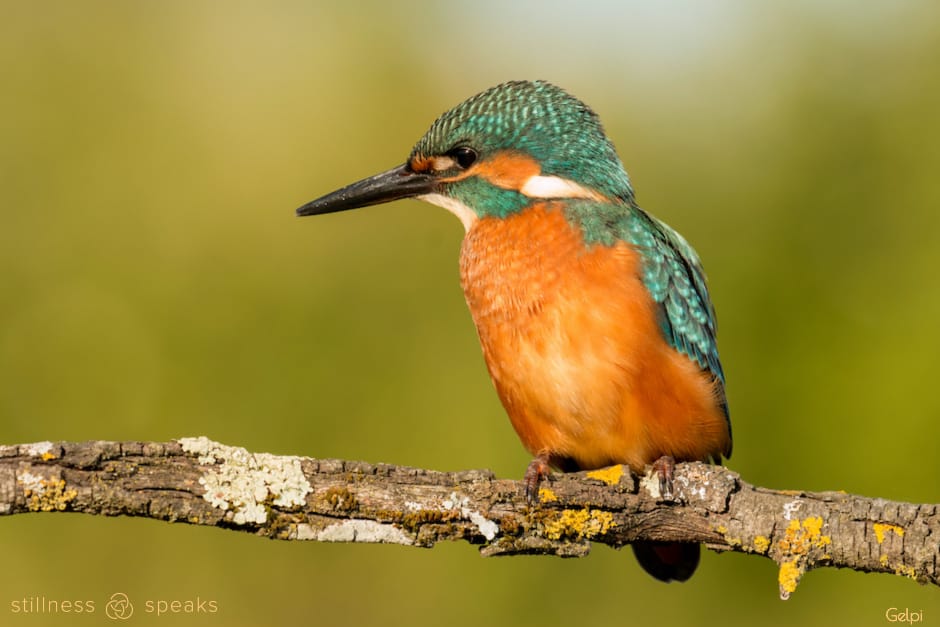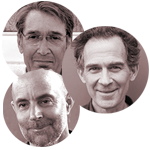sitting quietly: “… Presence is where the juice is, in the aliveness of this one bottomless moment. …” ~ Joan Tollifson
If you cannot find the Truth right where you are, where do you expect to find it? ~ Dogen
The real is always with you; you need not wait to be what you are. ~ Nisargadatta Maharaj
Indeed, both Dogen and Nisargadatta Maharaj are expressing the essence of “spirituality” … it’s simple yet profound … and can be said to be the gist of most, if not all, spiritual traditions … including nonduality. In the end, here and now (and that you are That!) … is what truly matters … and it’s all there is! … regardless of the minds machinations and endless “Yes, but…” debates. A debate that keeps most of humanity {as we are “mind creatures” 🙂 } trapped in not realizing … their True nature … That which is real … That which is obvious … That which is always here …
Rumi’s unparalleled literary feat – uttering a single poem 64 thousand lines long – was an outcome of this simple realization: that he was already That which he was searching for … and his poetry expresses the radiance, the beauty, the mystery of … this … here … now … in multitude of ways – from sacred to profane, from ordinary to extraordinary … from just about every range of life navigation.
Of course, our intention at Stillness Speaks is to offer multiple discourses into this Mystery … via voices of various living and departed luminaries … and …
Joan Tollifson is a master at expressing and unpacking this “topic” of … here and now … what is … so, today we start a multi-part series on the 2023 edition of her book: Painting the Sidewalk with Water: Talks and Dialogs about Nonduality (originally published in 2010). Such series are part of our ongoing content offerings that are substantive previews of books via chapter excerpts.
Joan’s book as the subtitle states, is a collection of talks and dialogs: “… transcriptions of meetings {she} held between 2004 and 2006, mostly in Chicago where {she} was living at the time, along with a bit of material from email exchanges and other conversations …” These meetings began with a period of silence typically followed by a short talk by Joan followed by Q&A with the audience.
So, Part 1 of this series is the initial excerpt of the chapter titled Why Sit Quietly? which is part of Joan’s short talk … where she unpacks “sitting quietly” in her unique and exquisitely articulate manner.
All italicized text above and below is from Painting the Sidewalk with Water: Talks and Dialogs about Nonduality by Joan Tollifson (2023 edition by New Sarum Press) and is published here with her and New Sarum’s generous permission. A PDF of the Table of Contents is available for download at the bottom of this post.
AND, Here are all of Joan’s posts on Stillness Speaks … and her website – full of deeply insightful and valuable content for your journey.
“… Everything is alive and moving, while never departing from the immediacy of Here and Now. …”
Sitting Quietly: Why?
Why do we begin by sitting quietly?
The deepest truth is, I don’t know. I enjoy it. I’m drawn to it.
But maybe I can say a little bit more than that.
No matter how many times we hear that “this is it,” and “there’s nothing to attain,” and “there’s only now,” and “there’s no self” – no matter how many times we hear all this stuff, there’s a very persistent habit of thinking otherwise – thinking that there is a “me” in the driver’s seat, thinking that this isn’t it, working very hard to get rid of something that’s here or trying to achieve something that isn’t here, feeling a sense of lack. The belief that something is missing is quite strong, quite tenacious, as is the idea of “me,” this seemingly solid entity encapsulated in a separate bodymind, adrift in an alien world, trying to get control. There seems to be a big gap between the things we read and hear about nonduality and our everyday experiences of unhappiness, doubt and uncertainty.
So sitting quietly is a way of stopping our usual activity (all the talking and doing) and simply being present to the bare actuality of what is going on in this moment. We can call it meditation, but that word has so much baggage attached to it and means so many different things to different people, that I prefer to call it nothing at all. What I’m talking about is nothing more than a simplified space where there can be careful attention given to what we usually overlook, overlay, ignore or avoid. And as we explore the present moment in depth, we can discover firsthand for ourselves how suffering happens, how the mirage of separation is created, how decisions and choices actually unfold (as opposed to how we think they unfold), and we can see directly how the idea of “me” and the story of “my life” are created by thought and imagination. We can discover that true joy, true happiness, true love, and true freedom are here in this simple presence that is right here, right now.
Otherwise, if we only read about this and hear talks about this, we often tend to take it in on a purely conceptual level as a new set of ideas – a philosophy or a belief system. But true freedom is all about seeing through all our beliefs and ideas, seeing through the mirage- world that thought creates, and recognizing what cannot be doubted, what is beyond belief, what is most obvious. Being in silence and doing nothing is one way of seeing through beliefs, stories, thoughts, concepts and ideas, and discovering the truth directly.
In simply being here in silence, one of the things that we notice is that the mind is not silent, it rattles on. So we can sit here in silence and actually spend the whole time talking to ourselves in our heads or watching mental movies – thinking about our upcoming vacation or some pressing problem, going over and over what happened to us this morning, trying to get into some special state or have some experience that we remember having four years ago on a retreat. We can sit here in silence and the whole time be absorbed in some kind of mental activity. And there’s nothing wrong with that, it’s not bad, and it’s not personal. I often say it’s just weather, it’s what’s appearing – the same way a thunderstorm or a cloudy day is appearing. No one is doing it.
But the more caught-up-ness there is in obsessive mental spinning, the more unhappiness and suffering there is. So in sitting quietly in silence, one of the things that can happen is seeing this mental spinning, seeing it for what it is, becoming aware of it without being totally absorbed in it and mesmerized by it, and noticing how alluring and also how unsatisfying it is, how it is often a form of suffering. We could say that sitting quietly is a way of giving attention to what actually is, seeing what’s really happening underneath all our ideas and stories about what’s going on. Not so that we can finally get to someplace better, but rather to see through the whole fixation on getting to someplace better, to see that habitual thought pattern as it arises again and again in so many different ways – that thought of somehow transcending, escaping, controlling, or getting beyond what’s here now.
In seeing that thought pattern for what it is, it loses its credibility. It becomes increasingly transparent. It’s easy to say spiritually correct things–these Advaita or Zen or nondual teachings are easy to talk about, at least in one sense. In fact, nonduality is utterly impossible to talk about, but what I mean is that it is easy to say things like, “There’s no separation, there’s no self, there’s no time, there’s only now, unicity is all there is.” But if it’s just words, then it’s ultimately unsatisfying. So sitting quietly is a way of making it real, actualizing it, embodying it.
As soon as I put any of this into words, no matter what words I use, it’s off in some way. If I talk about “making it real” and “embodying it,” immediately it sounds like another process for “me” to undertake, another accomplishment, another goal. So the words are always off in one direction or another. If you can, take them very lightly, because words can’t really capture what happens in silently being here–the actuality of simple, bare being. The words can only describe it in some way. The actuality–the suchness–of hearing, seeing, breathing is absolutely indescribable and impossible to grasp, and yet it is effortlessly and undeniably present, just as it is.
There’s no separation anywhere except in thought. Thought can think about dividing lines. That’s what thought does. It draws imaginary lines around things, like on a map, and then labels them. It fractures unicity into pieces like a jigsaw puzzle. Thought says that “my skin” divides “me” from “the room.” But if you tune into non-conceptual sensing and perceiving, you discover that this boundary line doesn’t really exist, it can’t actually be found. Meditation, as I mean it, is that kind of tuning in to direct, present moment, non-conceptual experiencing and seeing through the conceptual overlay.
Of course we need those relative boundary lines in order to function. We need to be able to distinguish between me and the chair. Waking up is not about getting to some state where we walk around having some constant mystical experience that there is no difference between me and you, or between people and carpets. But as we begin to see how all separations are created in thought, they lose their absolute solidity. They become more like tentative functional appearances instead of absolutely solid facts. We fight wars over absolutely solid facts, or what we think are absolutely solid facts – big wars on the international scene and little wars in our daily lives or in our heads. We fight over the illusion of solidity and separation when it isn’t really there. And all of our suffering is generated by these illusions of separation and solidity.
~ Joan Tollifson
Click here for the free, downloadable PDF of the Table of Contents.
Stay tuned for … the remaining excerpt of the chapter Why Sit quietly? …
=== ==== ===













Beautiful thank you thank you thank you 💚 ♥️🙏
Indeed Joan is – as always – spot on!
Thanks for stopping by Annie.
🙏
sanjiv
Ohhhhh gorgeous …..thank you
Indeed Joan is – as always – spot on!
Thanks for stopping by Annemieke.
🙏
sanjiv